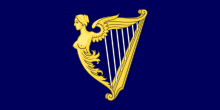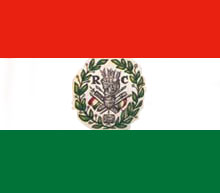I might be dense, but I couldn't figure out how to put my claim in on Google Docs
Official Name: Cisalpine Republic of Lombardia
Common Name: Lombardia
Capital: Milan
Head of Government: Consul Giorgio Bonaparte, Consul Ezio Garibaldi
Head of State: see above
Major Political Parties: (
Demonym: Lombard
Languages: Lombardi (a close match to OTL Italian
Ethnic Groups: Lombardi (80+%), Neapolitan and other Byzantine (12%)
Religions: Catholic (90+%) Jewish (estimated 4%)
Population: 11 Million
Location: (Northern Italy from the Alps down to Latium, including Venice)
History: Founded by marauding Germania conquerors, after an initially hostile relationship with the Church and local population the Iron Crown of the Lombards began to assimilate in the late 9th century.
The Donation of Sutri established the temporal political power of the Pope, ceding control of Latium to the Holy See. At the it's peak the Lombard Kingdom of Italy included the entire Italian peninsula except for small Byzantine enclaves and this papal territory.
Internal strife, Muslim invasion and a resurgent East Roman Empire cost the Lombards southern Italy, but by they retained control of their Northern base, the region now generally known as Lombardy.
Despite the losses of territory, Lombardy itself was a fertile and prosperous territory. The Lombard Kingdom was a major player in the region throughout the middle ages. Until the 12th century Lombard history is dominated by internal struggles between the Crown and powerful Dukes, and external ones involving the Papacy, the Empire, and Avar, Frankish, and Muslim neighbors. Powerful Duke's were usually successful at repelling Muslim raiders and under strong Kings they managed to conquer Corsica and force Venice to submit. But these same Dukes forced an elected monarchy, which became officially codified in 1098. The result was that virtually no King ascended to power without some bloodshed.
Despite frequent wars and the outbreak of plague, Lombardy benefited greatly from its fertile lands and advantageous trade position. It experienced a surge in urban population in the 12th century, around the same time the last legal distinctions between Lombard and Roman dissappeared.
A third factor emerged in internal politics, the powerful and wealthy urban families. The three Urban Leagues (1166, 1180, 1197) saw these flex their muscle, defeating royal forces in the first and third and extracting concessions in the second. The Free Cities established local republics patterned after ancient roman law. They never left the authority of the Iron Crown, but exercised massive autonomy, often joining with the feudal Lords and playing critical roles in determining succession.
The Free Cities also established widespread trade routes, and we're the cradle of Finance in Western Europe. As far away as England Lombard became synonymous with Banker. As a result of this, as well as the naval power of cities like Pisa, Genoa and Venice, Lombardy played a major role in the Crusading Wray ((assuming some kind of Crusades ever happened somewhere in the Mediterranean Basin, which seems reasonable)). Success and failure both brought exposure to eastern knowledge and goods. The relative power of the Patrician families grew, and the Dukes became more dependent on them.
Despite setbacks from the recurrence of the plague in the 1300s, by the 15th century the landed aristocracy had been mostly absorbed by the urban Patricians. The Iron Crown became a prize for these merchant princes.
The 15th through 18th centuries are referred to in Lombardy as the Age of Vendettas. The Civil wars of the medieval period had been replaced with assassination. Despite the unsavory reputation they acquired, the merchant princes also competed through sponsorship of the arts and science and through magnificent architecture. Ironically an era infamous for decadence saw the creation of some of the most spectacular ecclesiastical art.
This same era saw the underpinnings of the Merchant Prince's Empire's undermined. New sea routes over the oceans made their dominance over the Mediterranean trade less important. Innovative technologies and business practices had spread through the very networks theyou had created. Focusing their energy on politics and art, the leaders of Lombardy were slow to recognize this process.
Almost no one realized at the time the significance of the printing press, and the spread in literacy among the urban middle class. But this group of craftsmen, small merchants, and clerks made up most of the audience for the poetry and plays the elites sponsored. They embraced the romanticized version of the Roman Republic that was the common theme. Merchant Prince's liked to praise the Republic as a way of asserting Lombardy as the real heir of Roman civilization, and to portray their rivals as potential tyrants.
Nationalism and populism became politically relevant in the 18th century. Whipping up the 'vulgar crowd' as a way to pressure electors was a favorite tactic of the three successive Medici Kings. But in 1791 the election went off script.
The previous ten years had seen a sharp economic downturn. The middle class of Milan was hard hit, and the urban poor often desperate. But the lifestyle of the ruling class only grew more opulent. The fine churches and elegant mansions had become a taunt, rather than a source of civic pride.
The crowds paid to chant and roar for the various claimants stopped demanding any king. "Bread" became the most popular cheer. Then somehow it became "blood."
The Red Election saw the crowds overwhelm the limited bodyguards that the electors were permitted to bring. The leading nobility of Lombardy was wiped out in a single afternoon of violence.
As news spread from Milan, similar scenes played out in Venice, Genoa, Pisa, Florence- all the economic and political centers. Surviving members of the great families rallied their supporters at more rural strongholds like Monterigioni. Florence was the first to proclaim a Commune and organize a government and citizen army. The other Free Cities followed suit, allying into what they would later dub the Cisalpine Republic.
The Revolutionary Wars would astonish Europe and define regional politics for nearly three decades. Poor cooperation among the reactionaries (who never could break their habit of murdering and betraying one another) led to Republican victory, which in turn begat foreign intervention.
The citizen Army of the Republic surprised the established armies of the various coalitions. The Papacy became the key player in forging coalitions against the Republic. Having put down a sympathetic uprising in Rome itself, the Church saw the Revolution to its north as an assault on civilization itself.
In the giddy first years of the Cisalpine Republic everything seemed open to being remade. A new calendar was invented, a new rational system of measurements. With the Church now essentially an enemy of the state its property was seized, and a secularization campaign began. Printing presses could not keep up with the flood of manifestos that articulated the principals by which a Utopia could be established.
The chaotic ecstacy begat new governments and constitutions. The Concordance was replaced by the Committee which became the Directorate. Persecution of "subversives" and "enemies of the people" claimed countless lives, made worse by the fact that what constituted subversion changed with every shift in politics. And all the while the Republic fought external threats.
Out of this emerged Napoleon Bonaparte. A Corsican army officer of tremendous skill and even greater ambition, he rose to be Commander in Chief of the Republican Armies. In 1803 he staged a coup, instituting yet another constitution.
The Consular Constitution was supposed to fix the autocratic tendencies of the Directorate by having two executives to check each other. In practice Napoleon dominated the series of placeholders he allowed to serve as Co consuls. He ruled as Dictator, a title he made official in 1805.
Napoleon gave the public stability at home and victory on the battlefield. He ended most of the persecutions, made peace with the Church by returning some of their property, and instituted major public welfare projects. He also built a ruthless police force that was dedicated to eliminating dissent. Napoleon doled out high offices to his family and marshals, who lived lives as luxurious as the prerevolutionary nobility, who were now allowed to return.
Though in some ways conciliatory, the Republic was at peace for less than 2 years total during his entire time in power. 14 months of that was his final time in power. After inflicting a heavy defeat on the Neapolitan and imposing a favorable peace, Napoleon was left without an enemy.
The Great Dictator soon became restless. The military was never demobilized. Rumors circulated that he planned to invade the Eastern Empire, the Papal Estate, Naples, or (most commonly) all three.
His allies in the Senate and Assembly voted him a roman style Triumph. As the day of the ceremony came, word began to spread that he would be offered the title Emperor at its climax.
The assassination of Napoleon Bonaparte occurred in broad daylight in full view of tens of thousands of people, and yet remains unsolved. During the triumphant procession one of the white robed and masked senators suddenly climbed aboard Napoleon's gilded chariot and stabbed him in the throat. There was then a loud explosion and a thick cloud of smoke. When some semblance of order was restored all the senators were accounted for, none with any blood on their white robes.
In the long and storied history of Lombardian public political murders, it was undoubtedly the most spectacular. Virtually everyone of consequence in the Republic has been accused of being involved. There remains no consensus on who was responsible, or even what, if anything, the Dictator and the assassin said.
Napoleon's regime did not survive him. His supporters dominated the government and military. But there was no central figure for the "Bonapartists" to unite behind. His son was a child, his many brothers were on poor terms with each other and with the Marshals.
In the vacuum Marshals Valentino and Eruzioni imposed the Consular Constitution. Incredibly the Consular system worked exactly as intended. The Consuls blocked each other from amassing enough power to establish a dictatorship, and competed for support from the senate, assembly, secret police, church, civil service and other factions. Both Consuls stepped down after their five year terms, and new Consuls were chosen.
Since then the Consular Constitution has held up. Politics in the Republic are intensely personal; parties are more like cliques, and coalitions rise and fall virtually every time a new issue, crisis, or scandal arises. The organs of Government keep running on thanks to the entrenched bureaucracy. Allegedly secret societies compete for control of every aspect of society in an eternal struggle dating back to ancient times. The existence of these societies has never been proven, much less their influence.
The post-Napoleonic Era has seen a boom in the economy thanks to new technologies and a peacetime demographic recovery.
Flag:
Fun bonus section: Alleged secret societies that control some or all of the Republic
The Assassin Brotherhood, the
Stonecutters, the Carbinari, the Illuminati, the Damnati, the Brotherhood of the Wolf, the Romulans, the Remans, the Hermetic Order, the Blood Cabal, the Evocatii and the League of Shadows.





















